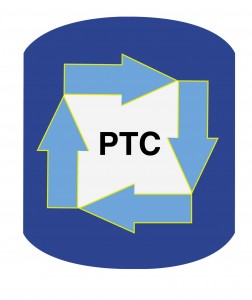One of the challenges met in this patent was to form a molecule with a carboxylic acid at one end and an intact epoxide at the other end with a diene/dienophile couple useful as an adhesive for thermosetting resins that can be: [1] cured at mild temperatures for circuit board production [2] but also “reworked” by heating defective devices to reduce waste. This technology is driven by the high market demand for hand-held devices.
We wonder if the THF could have been replaced by a less polar solvent with the phase-transfer catalyst by using a very mild base to deprotonate the methacrylic acid (even bicarbonate would be sufficient) in order to enable the tetrabutylammonium to transfer and activate the methacrylate anion AND control the concentration of the methacrylate anion in the reaction phase by adjusting the phase-transfer catalyst level.
The mechanism of the reaction as shown is likely ring opening of the epoxide by iodide of tetrabutylammonium iodide then displacement of the iodide by the methacrylic acid. The dilemma is that if an excess of methacrylic acid is used, too much diacid would be formed. If too little methacrylic acid is used, the conversion to epoxide-acid will be low. Using 1.0 equiv methacrylic acid gave a good compromise with 70% yield.
The TBAI catalyst was likely separated from the product by extraction into water. t-Butyl catechol is a stabilizer.
If your company needs to improve a nucleophilic substitution reaction, now contact Marc Halpern of PTC Organics to integrate highly specialized expertise in industrial phase-transfer catalysis with your commercial goals to achieve low-cost high-performance green chemistry.
About Marc Halpern

Dr. Halpern is founder and president of PTC Organics, Inc., the only company dedicated exclusively to developing low-cost high-performance green chemistry processes for the manufacture of organic chemicals using Phase Transfer Catalysis. Dr. Halpern has innovated PTC breakthroughs for pharmaceuticals, agrochemicals, petrochemicals, monomers, polymers, flavors & fragrances, dyes & pigments and solvents. Dr. Halpern has provided PTC services on-site at more than 260 industrial process R&D departments in 37 countries and has helped chemical companies save > $200 million. Dr. Halpern co-authored five books including the best-selling “Phase-Transfer Catalysis: Fundamentals, Applications and Industrial Perspectives” and has presented the 2-day course “Practical Phase-Transfer Catalysis” at 50 locations in the US, Europe and Asia.
Dr. Halpern founded the journal “Industrial Phase-Transfer Catalysis” and “The PTC Tip of the Month” enjoyed by 2,100 qualified subscribers, now beyond 130 issues. In 2014, Dr. Halpern is celebrating his 30th year in the chemical industry, including serving as a process chemist at Dow Chemical, a supervisor of process chemistry at ICI, Director of R&D at Sybron Chemicals and founder and president of PTC Organics Inc. (15 years) and PTC Communications Inc. (20 years). Dr. Halpern also co-founded PTC Interface Inc. in 1989 and PTC Value Recovery Inc. in 1999. His academic breakthroughs include the PTC pKa Guidelines, the q-value for quat accessibility and he has achieved industrial PTC breakthroughs for a dozen strong base reactions as well as esterifications, transesterifications, epoxidations and chloromethylations plus contributed to more than 100 other industrial PTC process development projects.
Dr. Halpern has dedicated his adult life to his family and to phase-transfer catalysis (in that order!).


